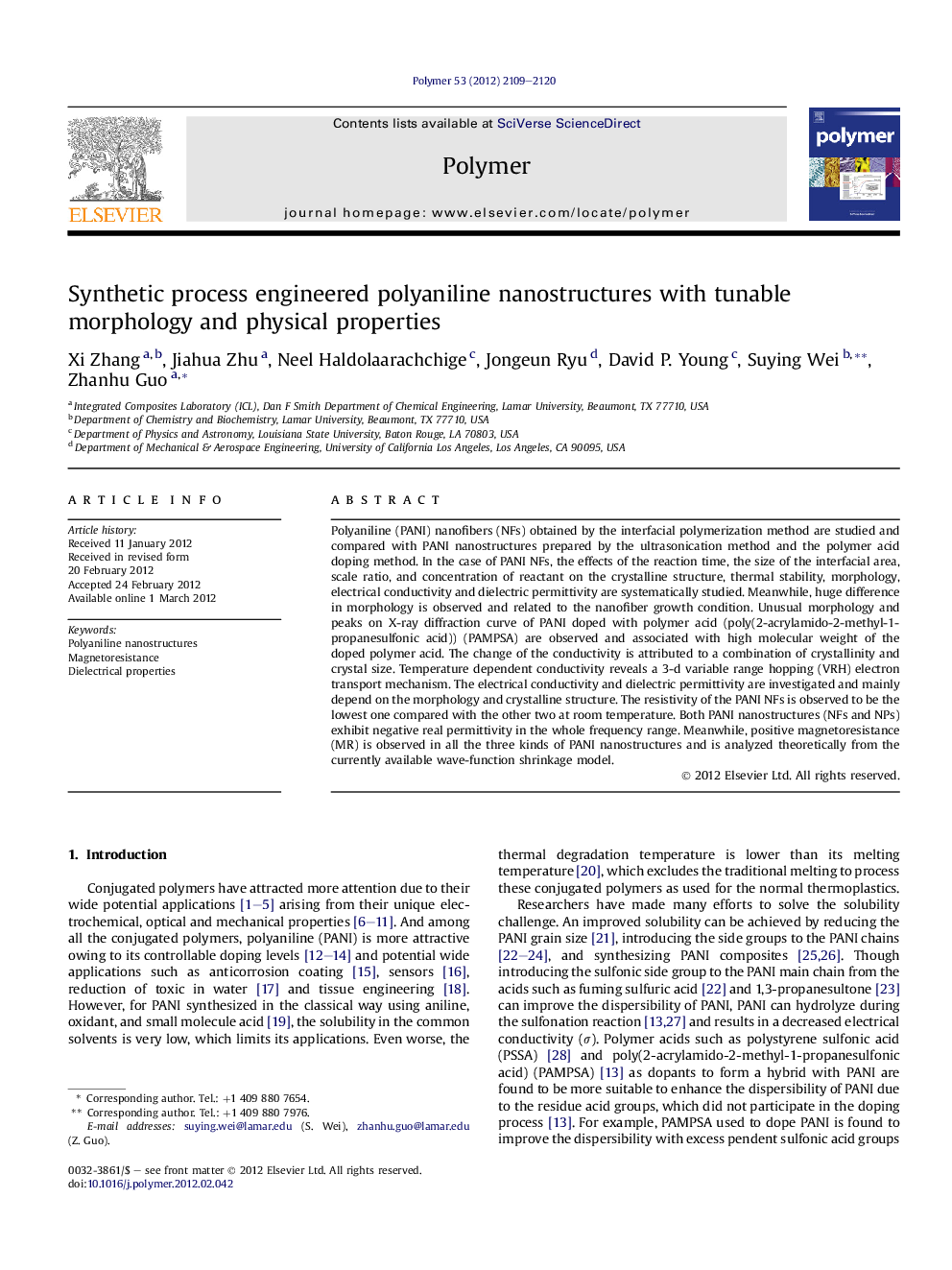| Article ID | Journal | Published Year | Pages | File Type |
|---|---|---|---|---|
| 5183724 | Polymer | 2012 | 12 Pages |
Polyaniline (PANI) nanofibers (NFs) obtained by the interfacial polymerization method are studied and compared with PANI nanostructures prepared by the ultrasonication method and the polymer acid doping method. In the case of PANI NFs, the effects of the reaction time, the size of the interfacial area, scale ratio, and concentration of reactant on the crystalline structure, thermal stability, morphology, electrical conductivity and dielectric permittivity are systematically studied. Meanwhile, huge difference in morphology is observed and related to the nanofiber growth condition. Unusual morphology and peaks on X-ray diffraction curve of PANI doped with polymer acid (poly(2-acrylamido-2-methyl-1-propanesulfonic acid)) (PAMPSA) are observed and associated with high molecular weight of the doped polymer acid. The change of the conductivity is attributed to a combination of crystallinity and crystal size. Temperature dependent conductivity reveals a 3-d variable range hopping (VRH) electron transport mechanism. The electrical conductivity and dielectric permittivity are investigated and mainly depend on the morphology and crystalline structure. The resistivity of the PANI NFs is observed to be the lowest one compared with the other two at room temperature. Both PANI nanostructures (NFs and NPs) exhibit negative real permittivity in the whole frequency range. Meanwhile, positive magnetoresistance (MR) is observed in all the three kinds of PANI nanostructures and is analyzed theoretically from the currently available wave-function shrinkage model.
Graphical abstractDownload full-size image
